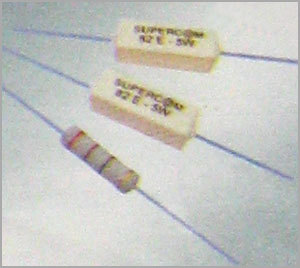Advanced Uses of Wire Wound Resistor
With the fast-paced strides in technology, the these resistive components continue to play a pivotal role in numerous settings. Beyond being a simple resistor, the wire wound resistor embed centrally in myriad technological feats. Through this article, we explore the expansive applications of the wire wound resistors.
The Essence of Precision in Wire Wound Resistor
A monumental advantage provided by the wire wound resistor is their unprecedented exactness. The precision attained that other resistors struggle to match. Their craftsmanship is shown in the winding, achieving meticulous resistive characteristics.

In fields requiring great accuracy, such as advanced instrumentation creation, these resistors fulfill expected precision. This aptitude guarantees accuracy aren't compromised even during fluctuations in other variables.
Efficient Power Handling by Wire Wound Resistors
The amazing proficiency of these resistors in dealing with power is responsible for their favored applications. They sustain high power without sacrificing integrity.
Innovative energy harnessing solutions like turbine-based power systems and photovoltaic arrays take advantage of this robust nature. Transforming renewable energy involves many fluctuating conditions. In these scenarios, they demonstrate their worth, balancing current flows to achieve desired energy yields.
Resistor Innovations Shaping the Future
The direction in electronics development shapes electronic components like resistors. Now more than ever, wire wound resistors are combining into smart and connected devices as part of the Internet of Things (IoT).
Smart grids stand at the forefront of innovation. Wire wound resistor materials powered grids owe much to wire wound resistors. They offer localized power handling across wide-reaching infrastructures, keeping energy balanced. They enhance operational smoothness and promote sustainable energy practices.
Choosing a Wire Wound Resistor
Choosing the appropriate wire wound resistor for your needs requires insight into what the task requires. The parameters of resistance, usable power, and conditions are imperative to comprehend. Looking into these characteristics lends a definitive direction to an optimal selection.
Being diligent in this process secures correct resistor application. Furthermore, collaborating with suppliers improves choice quality, allowing bespoke resistor configurations that meet intricate application needs.
Where We Go Next with Wire Wound Resistors
In alignment with electronic advances, these resistive components must anticipate further progress. Trends in miniaturization demands design reinventions, pushing for slimmer yet powerful resistors. Advancements in material science may provide alternative wire compositions giving unprecedented reliability.
Simultaneously, integration with digital interfaces could allow dynamic resistor adjustments, providing smart functionalities. Such moves will create a synergy between resistors and smart infrastructures, boosting performance metrics. Pioneering developers are spearheading these transformations, solidifying a robust future for resistors for upcoming generations.
